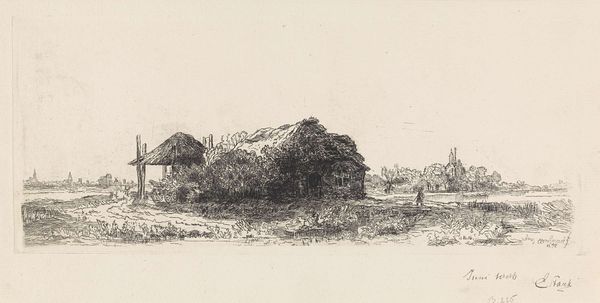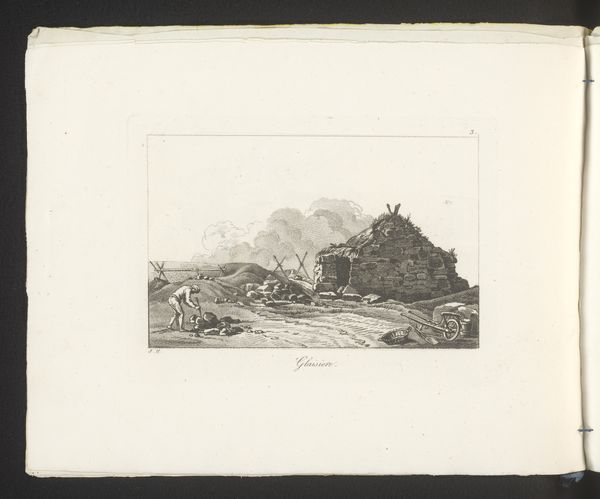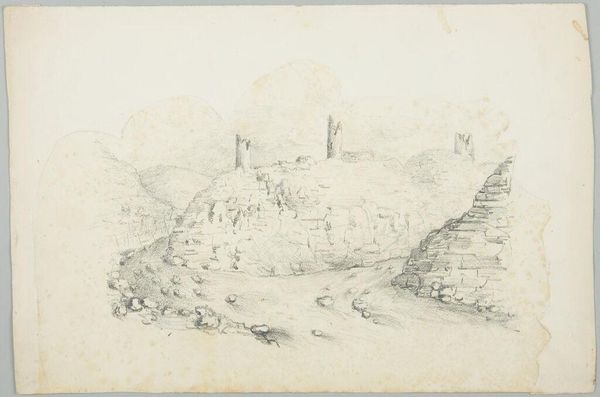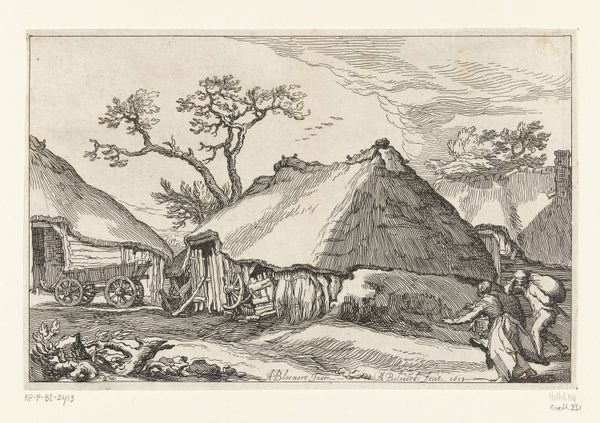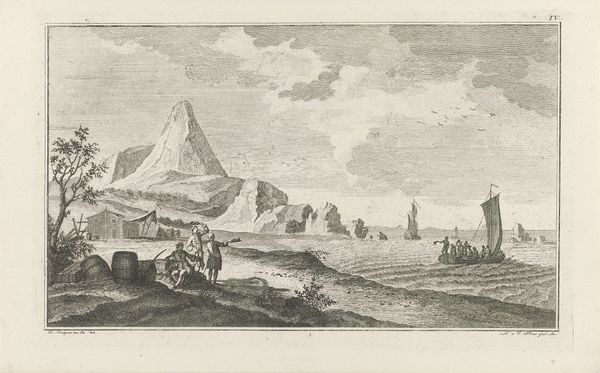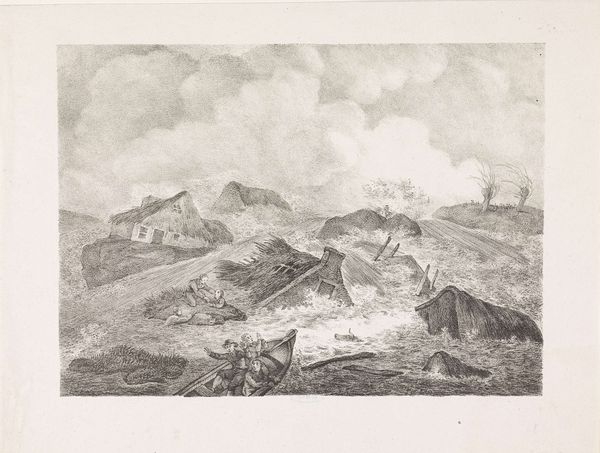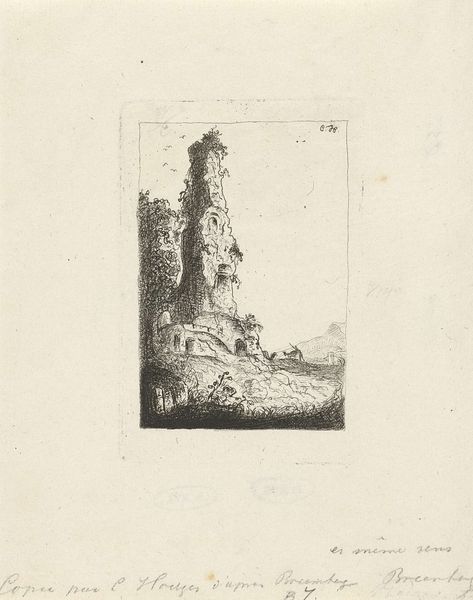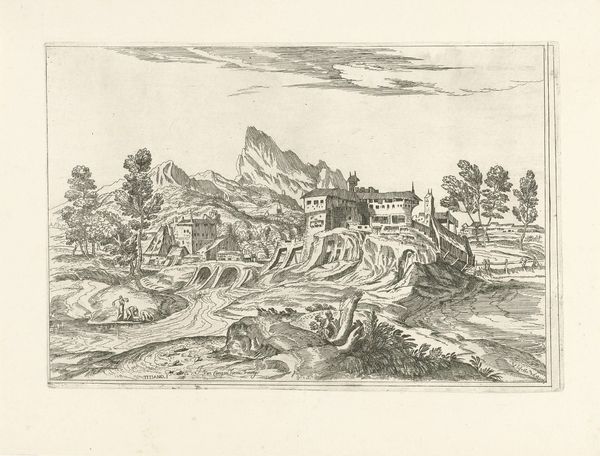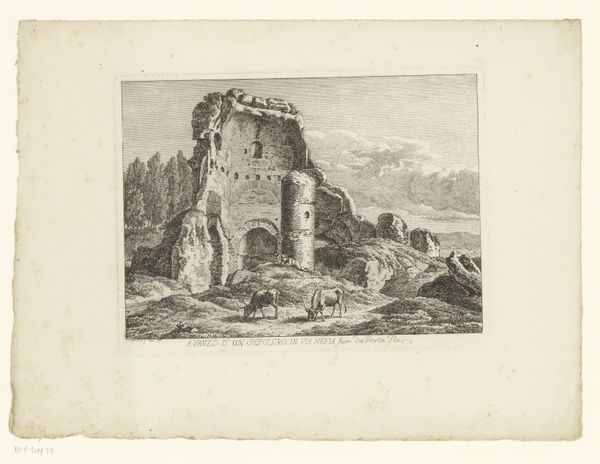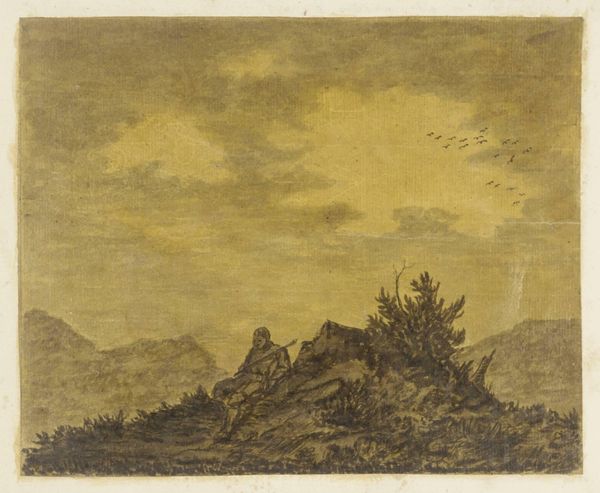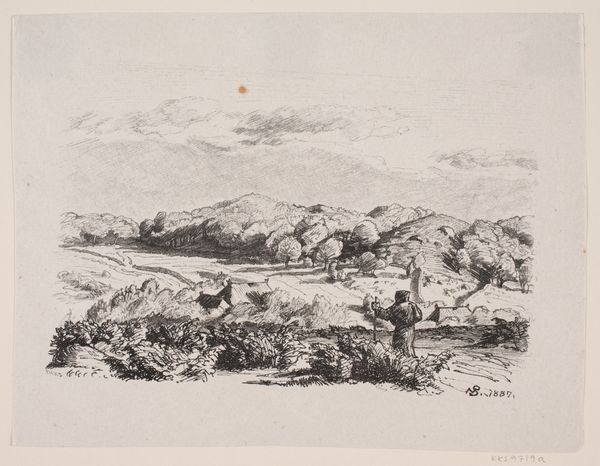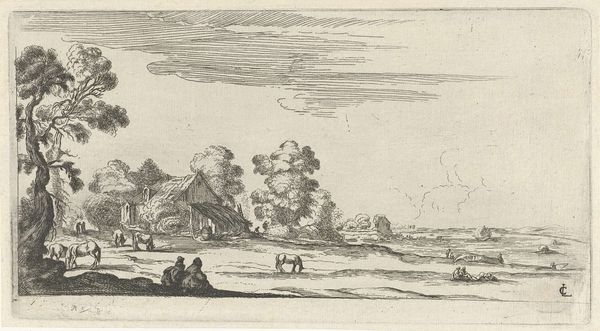
Ruïnes van de orillon Coehoorn en de lunetten Zeeland en Utrecht 1772 - 1780
0:00
0:00
print, etching
#
neoclacissism
# print
#
etching
#
landscape
Dimensions: height 178 mm, width 270 mm
Copyright: Rijks Museum: Open Domain
Curator: The dry landscape and geometric precision give this etching a remarkably clean and austere quality, almost a clinical gaze onto a forgotten time. Editor: That's Simon Fokke's "Ruïnes van de orillon Coehoorn en de lunetten Zeeland en Utrecht," made between 1772 and 1780. The piece, rendered through etching techniques, presents the remnants of fortifications in a neoclassical style. Curator: Neoclassical definitely, which suggests a rational order and controlled beauty, and yet, looking closer, that imposing, conical form carries echoes of ancient tumuli, burial mounds of earlier times. Those tiny figures atop hint at both exploration and veneration, no? Editor: A stark juxtaposition of forms, isn't it? This tension permeates the print. Look how the lines themselves operate—rigid, structural etching defining the architectural remains, softened by subtle variations suggesting natural erosion and human touch. Semiotically speaking, ruins always represent temporality. Curator: Precisely! Fokke doesn't just document decay; he reveals the cyclical nature of human ambition. The fortifications speak to once vital military structures and power, and what remains implies vulnerability. Editor: The very flatness and seeming detachment might underscore the ultimate futility of even the grandest endeavors. Consider also that birds dot the skyline which offers an image of continued freedom and natural movement, indifferent to the fallen ramparts. Curator: I see what you mean. Perhaps the neoclassical setting helps provide historical grounding, enabling viewers to project the anxieties of that time onto a timeless symbol of decline. There is almost a sense of moral instruction embedded in this imagery. Editor: Ultimately, it's an invitation to contemplate how structures shape and are, in turn, shaped by time—visually a statement, both historical and haunting, of humanity's fragile existence, don’t you think? Curator: It certainly provides more to reflect on than one might think at first glance! Editor: Indeed. I appreciate how a simple etching technique illuminates such a wealth of themes concerning civilization and impermanence.
Comments
No comments
Be the first to comment and join the conversation on the ultimate creative platform.
